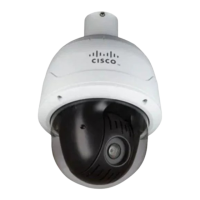2
Using the ROM Monitor
OL-5997-02
Information About the ROM Monitor
Information About the ROM Monitor
Before using the ROM monitor, you should understand the following concepts:
•
ROM Monitor Mode Command Prompt, page 2
•
Why Is My Router in ROM Monitor Mode?, page 2
•
When Would I Use the ROM Monitor?, page 2
•
Tips for Using ROM Monitor Commands, page 3
•
Accessibility, page 3
ROM Monitor Mode Command Prompt
The ROM monitor uses the rommon x > command prompt. The x variable begins at 1 and increments
each time you press Return or Enter in ROM monitor mode.
Why Is My Router in ROM Monitor Mode?
Your router boots to ROM monitor mode when one of the following occurs:
•
During power up or reload, the router does not find a valid system image.
•
The last digit of the boot field in the configuration register is 0 (for example, 0x100 or 0x0).
•
You enter the Break key sequence during the first 60 seconds after reloading the router.
To exit ROM monitor mode, see the “Exiting ROM Monitor Mode” section on page 29.
When Would I Use the ROM Monitor?
Many users do not use the ROM monitor at all, except in the following uncommon situations:
•
Manually loading a system image—You can load a system image without configuring the router to
attempt to load that image in future system reloads or power-cycles. This can be useful for testing
a new system image or for troubleshooting. See the
“Loading a System Image (boot)” section on
page 10.
•
Upgrading the system image when there are no TFTP servers or network connections, and a direct
PC connection to the router console is the only viable option—See information about upgrading the
system image in configuration documentation for your router.
•
During troubleshooting if the router crashes and hangs—See the “Troubleshooting Crashes and
Hangs (stack, context, frame, sysret, meminfo)” section on page 24.
•
Disaster recovery—Use one of the following methods for recovering the system image or
configuration file:
–
Console download (xmodem)—Use this method if the computer that is attached to your console
has a terminal emulator that supports the Xmodem Protocol. See the
“Downloading Files over
the Router Console Port (xmodem)” section on page 15.
For more information about using the Xmodem protocol, see the Xmodem Console Download
Procedure Using ROMmon at the following URL:
http://www.cisco.com/warp/public/130/xmodem_generic.html

